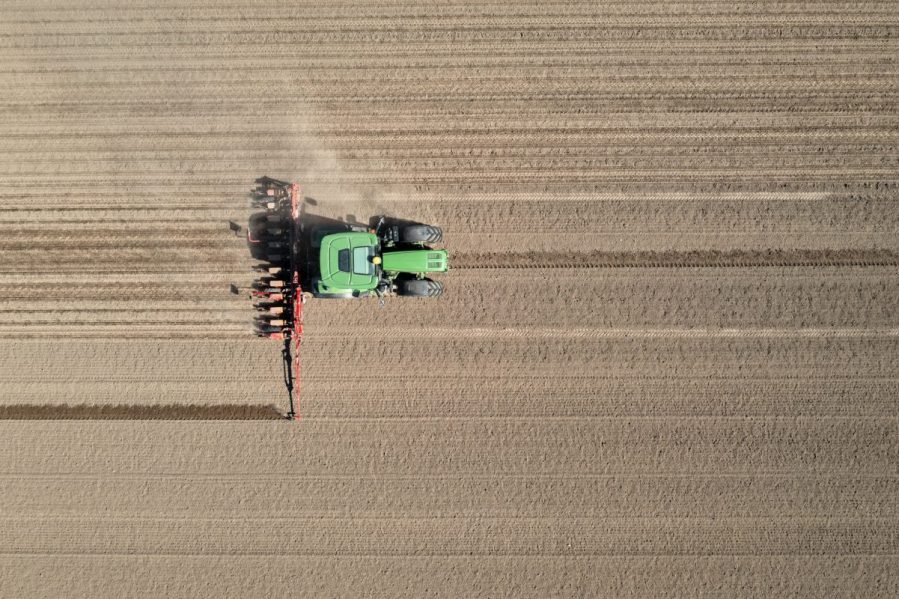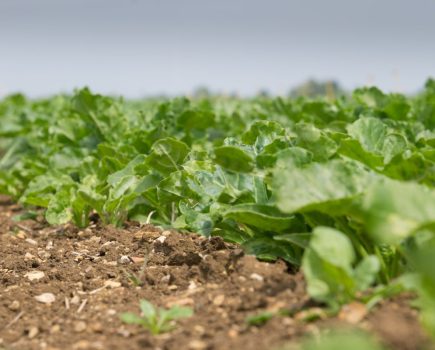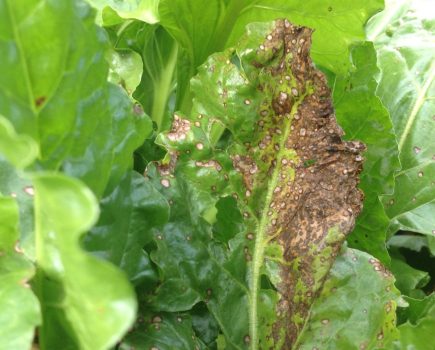With margins under pressure, sugar beet’s future hinges on productivity. From seedbed conditions to stacked traits in varieties, CPM explores how detail and innovation can keep the crop competitive.
“Productivity isn’t one silver bullet, it’s the cumulative effect of attention to detail.” ALISTAIR WRIGHT
By Charlotte Cunningham
After a turbulent few seasons, sugar beet is once again under the spotlight. Growers and breeders alike are reflecting not just on the crop’s challenges, but on how to sharpen its productivity and maintain its place in UK arable rotations.
For some, the crop’s resilience and margins remain attractive. For others, rising costs and market volatility are forcing difficult decisions about hectarage.
What is clear, is that productivity – in its broadest sense – has become the critical factor. From seedbed preparation and nutrient management through to variety choice and trait innovation, every detail matters to extract yield and profitability from the crop.
“Sugar beet has had a tricky few years,” acknowledges Martin Brown, sugar beet product manager at KWS. “It’s been up and down, but in general, margins still compare favourably with cereals. British Sugar currently has good stock levels after a run of high-yielding crops, which has meant a dip in demand for 2026. But longer term, supply and demand look stable, so it remains a reliable crop to bank on.”
Yet from the farm gate, the story looks more cautious. At Upton Suffolk Farms in Suffolk, farm manager Nick Sheppard says profitability is tightening. “Sugar beet was a very good margin crop, but the recent price shifts have taken the shine off. We’ll be reducing our area and confining it to heavier land where we know yields can get close to, or exceed, 80t/ha – that’s the level we require for an acceptable margin.”
It’s this tension – between broad market stability and on-farm financial scrutiny – that places productivity firmly at the heart of the debate. So how exactly can growers ensure sugar beet crops are as productive and profitable as possible?
Establishment is universally recognised as the foundation of yield, and getting the seedbed right is absolutely crucial, stresses Martin. “Too often, especially on heavier soils in dry springs, cultivations have been rushed or insufficiently refined. That leads to cloddy seedbeds and poor seed-soil contact. Given that you’re only placing 110,000-120,000 seeds/ha. Every seed has to count.”
Historically, lighter tractors and drills forced growers to prioritise fine tilths. However, today’s heavier kit coupled with a temptation to push on regardless of soil condition, can come back to bite growers, he warns. “You can ‘get away with it’ at drilling, but the penalty comes later when plant stands are patchy and roots are small.”
Nick adds that land choice is an important part of establishment discipline, too. “We won’t grow beet on our sands anymore, at the current pricing. On light soils, water drops straight through and you lose canopy resilience – opening the crop up to beet moth and drought stress. By sticking to heavier ground, we know we can hold onto moisture and achieve the 80t/ha threshold we want.”
For BBRO’s Alistair Wright, the early stages of the sugar beet cycle is also about hygiene. “Hygiene is one of the simplest productivity tools we have, but is often overlooked. Aphids can overwinter in a clamp on leaf remnant. That’s your inoculum source for virus yellows the following year.
“Resetting the clock each season – cleaning spoil heaps, putting waste back in-field, avoiding clamp sites on next year’s beet ground – is critical. It’s an age-old message, but one that still gets overlooked.”
Nutrient management is another cornerstone of productivity, and at Upton Suffolk Farms, digestate from the on-site AD plant is central to the system. “We apply digestate ahead of beet and combine it with starter fertiliser at drilling,” explains Nick. “On our high pH soils – often up to pH9 – nutrient availability can be tricky, so we’re also trialling Johnson-Su microbial compost extracts to enhance soil biology and make nutrients more available.”
MANAGING LOCK-UP
The challenge with these high pH soils is that they lock up key nutrients, he continues. “Phosphate, manganese and boron are especially affected. That’s where placement fertiliser and foliar micronutrients come in. We’ll use manganese and boron foliar feeds, and increasingly we’re looking at biologicals to stimulate microbial activity and free up tied nutrients.”
Looking at some of the main challenges that threaten productivity in general, managing virus yellows remains key. “With neonicotinoid seed treatments unlikely to return, genetics are the only sustainable long-term solution,” says Alistair. “But genetics alone won’t deliver. We’re testing repellents, mulches and cultural tools to confuse aphids or reduce landing pressure. Every measure that delays the demand for insecticide helps to protect beneficials and prolong chemistry efficacy.”
Threshold-based spraying is becoming increasingly difficult too, adds Nick. “Aphid pressure doesn’t arrive uniformly; I’m walking beet at least once a week from mid-May, and twice a week in peak conditions. You’re trying to judge thresholds without missing the window – it’s a constant balancing act.”
Cercospora is another growing threat. “We’ve seen fungicide resistance emerge rapidly, particularly to strobilurins,” warns Alistair. “Our monitoring shows resistant populations reset each winter, suggesting a fitness cost. But resistance to other modes of action is only a matter of when, not if. Alternating chemistry, integrating tolerant genetics like CR+, and avoiding overuse are essential to slow the process.”
The onset of a beet moth issue has also forced a rethink, he adds. “It’s been the breakout pest of the past two seasons. We’re now using AI-driven smart traps with pheromone lures to capture moths and upload daily images. This allows near real-time monitoring of migration, helping identify optimum spray windows if intervention is required.
“It’s far more effective than sticky traps, and we’re aiming to expand this system in 2025 so growers can access the data on a central platform.
In terms of genetics and the role they play in mitigating the impact of some of the challenges, modern breeding has transformed sugar beet’s resilience – and KWS has arguably been at the forefront of that shift, suggests Martin. “It wasn’t long ago that rhizomania resistance was a niche trait, now it’s universal. Since then, we’ve added BCN tolerance, Conviso Smart for weed beet control, virus yellows tolerance, and most recently CR+ for cercospora. Each trait addresses a specific on-farm challenge.”
The most recent advance from KWS has been the introduction of CR+ varieties, such as Chyma KWS, designed to slow the onset and spread of cercospora leaf spot. In untreated trials, CR+ material has shown strong tolerance, maintaining green leaf area later into the season without the rapid senescence that often undermines yield.
Martin explains that this approach doesn’t eliminate the need for fungicides, but does buy valuable time and ensures chemistry, when applied, is more effective.
Virus yellows tolerance is another area where breeders have made tangible progress. Maruscha KWS was the first tolerant variety on the UK Recommended List, followed more recently by Generosa KWS.
“While Maruscha carried a small yield penalty in clean conditions, it proved its worth under pressure, retaining more of its yield where infection was present,” says Martin. “Generosa has closed much of that gap, offering stronger output alongside tolerance, reflecting the steady narrowing of the so-called ‘yield lag’ between tolerant and standard varieties.”
TACKLING BCN
For growers wrestling with beet cyst nematode, options such as Katjana KWS provide both high yield and nematode tolerance, coupled with strong bolting resistance to support earlier drilling, he adds. “Meanwhile, the development of stacked-trait Conviso Smart varieties, like Smart Nelda, has opened up ground that was previously off limits. By combining weed beet control with BCN tolerance, these varieties allow growers to reclaim infested fields and manage them more efficiently.”
With regard to advice for selecting the right variety, Martin advises starting by looking at the with threats specific to the farm. “If BCN is present, pick a tolerant variety. If weed beet is limiting, Conviso Smart can open that land back up. For later lifts into December or January, canopy health and disease resistance are essential.”
Reflecting on his own farm requirements, Nick adds: “We risk-manage lifting – a quarter in October, a quarter in November, a quarter in December, and the rest in January. That means crops must stand through to the new year without dropping quality. An erect canopy that protects the growing point is vital – not just for light interception, but also for pest resilience to reduce the likelihood of beet moth infestations.”
It’s Alistair’s belief that varietal traits are increasingly setting the baseline for productivity. “You may still see some yield loss from virus yellows, but tolerant varieties take the edge off. Add in bolting resistance, priming and pelleting, and you have seed that’s far better equipped to deliver when it matters most.”
Nick agrees, pointing to his own experience. “We trialled Conviso in 2021 on a block that had historically yielded no more than 30t/ha because of weed beet. With Conviso it delivered nearly 89t/ha, and sugar content was the highest of the lot. It was a complete turnaround.”
In terms of what lies ahead, while growers will always be at the mercy of the sometimes-cruel hand of Mother Nature; for breeders, the focus is on stacking traits without sacrificing yield; and for researchers, it’s about embedding IPM strategies and harnessing new monitoring technologies.
For growers, it comes down to margins, resilience on-farm… and praying the season is kind. “It never fails to amaze me how we go from a small box of seed to 100t of beet,” concludes Alistair.
“But that only happens if we get every stage right – hygiene, establishment, genetics, nutrition, monitoring. Productivity isn’t one silver bullet, it’s the cumulative effect of attention to detail.”
This article was taken from the latest issue of CPM. Read the article in full here.
For more articles like this, subscribe here.
Sign up for Crop Production Magazine’s FREE e-newsletter here.




